
How to Choose the Best Commercial Deep Fryer
While the process of dropping a battered product in hot oil is simple enough, selecting the correct commercial deep fryer for your circumstances and application can be difficult. Whether you need a fryer for your food truck or high-volume cafeteria, this guide will help you find the perfect unit for your business.
Shop All Commercial Deep Fryers
Use the following links to easily navigate and learn more about choosing the ideal commercial deep fryer:
Commercial deep fryers are essential kitchen equipment in many foodservice establishments, from restaurants and cafeterias to food trucks and concession stands. They are designed to handle high-volume frying of foods such as french fries, chicken tenders, onion rings, and other popular fried menu items.
Commercial deep fryers come in various configurations, including countertop models for smaller operations and floor models for high-volume frying needs. They are available in gas or electric options, with gas fryers providing precise temperature control and higher-capacity options and electric fryers offering easier installation and quicker heat-up times. When selecting a commercial deep fryer, it's important to consider factors, such as the type of food you will be frying, the volume of food you need to fry, and the space available in your kitchen.
Watch our video to learn about the features and benefits of the main types of commercial fryers available.
0:00
There are four main types of commercial deep fryers: open-pot gas fryers, tube-type gas fryers, electric gas fryers, and flat-bottom fryers. Each type is available in floor and countertop models to suit various kitchen setups. Choosing the best fryer for your business depends on the types of foods you will be frying and your kitchen's demand.
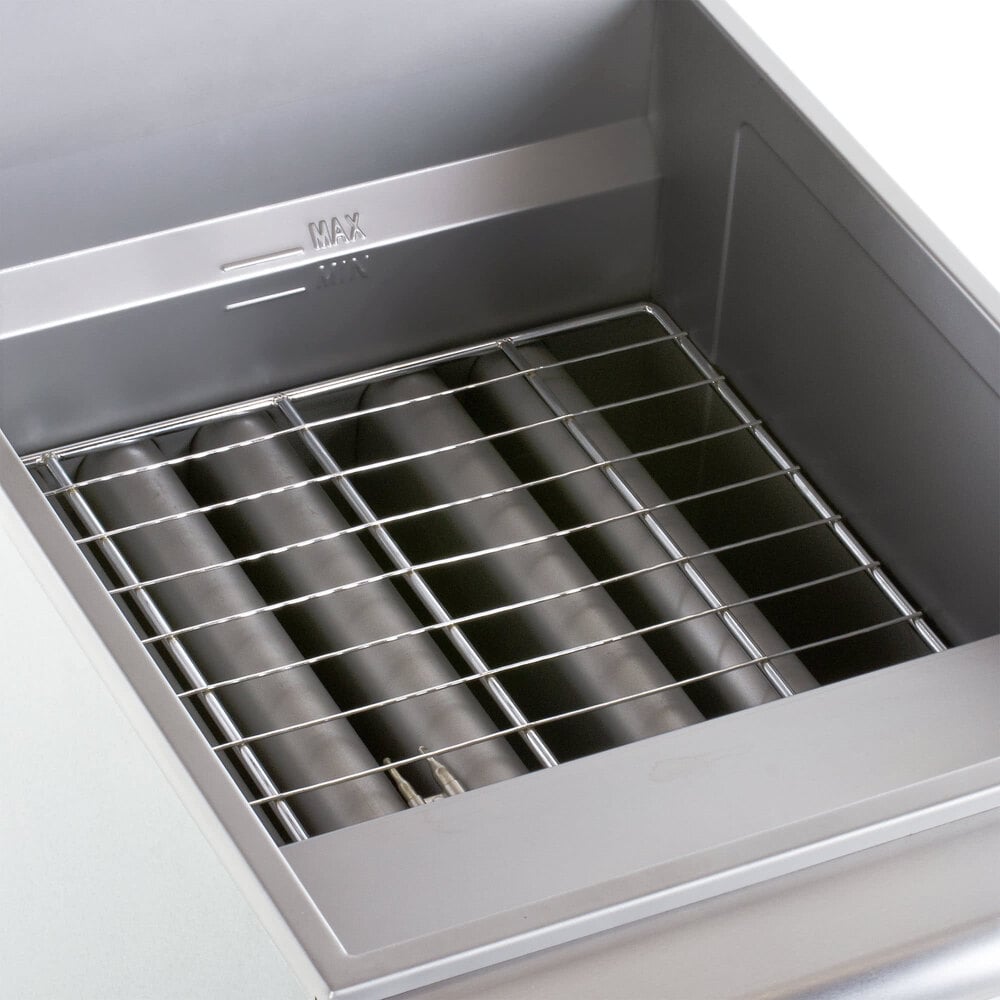
1. Tube-Type Gas Fryers
Tube-type gas fryers are the most versatile and economical, making them the most popular choice in commercial kitchens. These fryers feature heating elements inside the pot to heat the oil quickly and help it maintain its temperature, resulting in faster recovery times between batches. They are particularly well-suited for breaded and high-sediment food items.
One key feature of tube-type fryers is the large cold zones they offer. These cold zones help extend the life of the oil by preventing sediment from burning and affecting the flavor of the oil. Tube-type fryers can be challenging to clean due to the fixed heating tubes. Proper maintenance and cleaning procedures are essential to ensure the longevity and efficiency of these fryers.
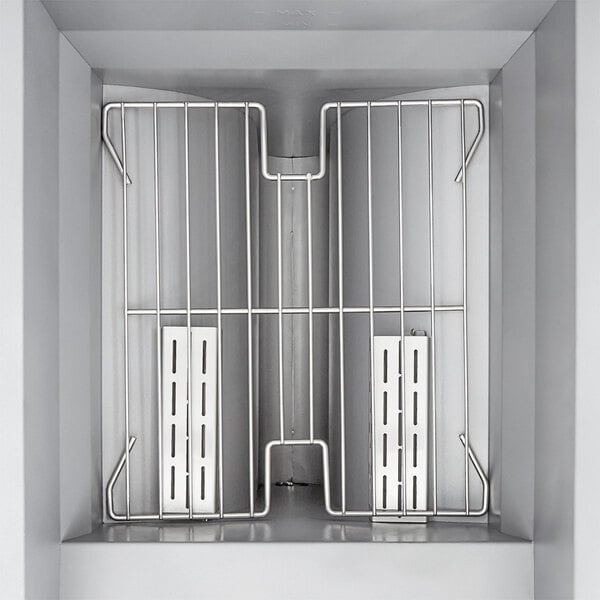
2. Open-Pot Gas Fryers
Open-pot gas fryers are a popular choice for high-volume kitchens. These fryers feature heating elements on the tank's exterior, making them easy to clean and maintain. However, because the heating elements are outside the fryer, they are generally less energy-efficient than other fryer types and have longer preheat and recovery times.
One of the key advantages of open-pot fryers is that they provide more frying space than other types of fryers and can hold more oil, allowing for the efficient cooking of large quantities of food. Since they have a smaller cold zone, they are best suited for cooking low-sediment items and frozen foods.
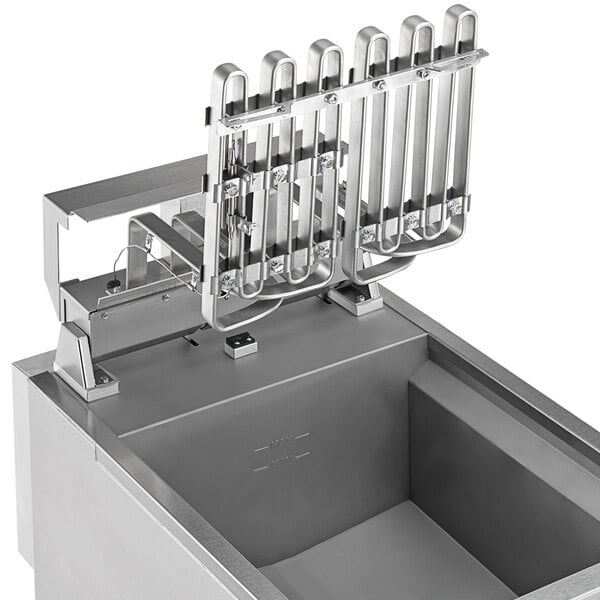
3. Electric Fryers
Electric fryers feature ribbon-like elements that run through the bottom of the fryer and are directly submerged in the oil. This design allows for fast preheating and quicker recovery times than gas fryers.
Electric fryers have a large cold zone, which helps to prevent oil contamination and extend the life of the oil. They are known for their energy-efficient heating method, making them a cost-effective option for businesses looking to save on energy expenses. The main drawback of electric fryers is that it can be challenging to clean under and behind the ribbon element if it's stationary. Electric fryers typically have a higher upfront cost compared to other fryer styles.

4. Flat-Bottom Fryers
Flat-bottom fryers, sometimes called funnel cake/donut fryers, are a popular choice for commercial kitchens looking to fry donuts, funnel cakes, and other wet batter products to perfection. Available in both electric and gas models, these fryers offer versatility to suit various kitchen setups. Flat-bottom fryers allow products to float freely in the oil, ensuring even cooking throughout. The flat bottom eliminates the cold zone in the fryer, which reduces oil life but maximizes the capacity for frying large batches of food at once.
While flat-bottom fryers offer efficient cooking, they may take slightly longer to heat up compared to other fryer types. Because they lack a cold zone, these fryers are not ideal for cooking high-sediment items. The heating elements do not obstruct the bottom of the tank, making it easier to clean and maintain the fryer for optimal performance.
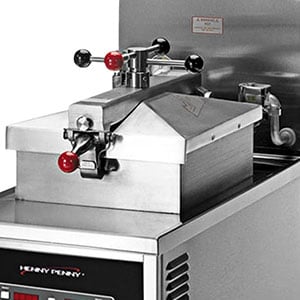
5. Pressure Fryers
Available in electric and gas models, pressure fryers are a valuable addition to any commercial kitchen looking to produce high-quality fried foods efficiently and consistently. They are well-suited for quickly frying high- and low-sediment foods in high volumes. Compared to open deep fryers, pressure fryers offer quicker cooking times due to the increased boiling point of water. Their built-in oil filtration system helps maintain the quality of the oil and allows it to last through several cooking cycles before needing to be drained and replaced.
Pressure frying allows you to cook full batches of product in less time and at lower temperatures, which is perfect for locking in moisture and flavor. The pressure seals excess oil from the food for a healthier product. This is all done using less energy and oil than a standard open fryer.
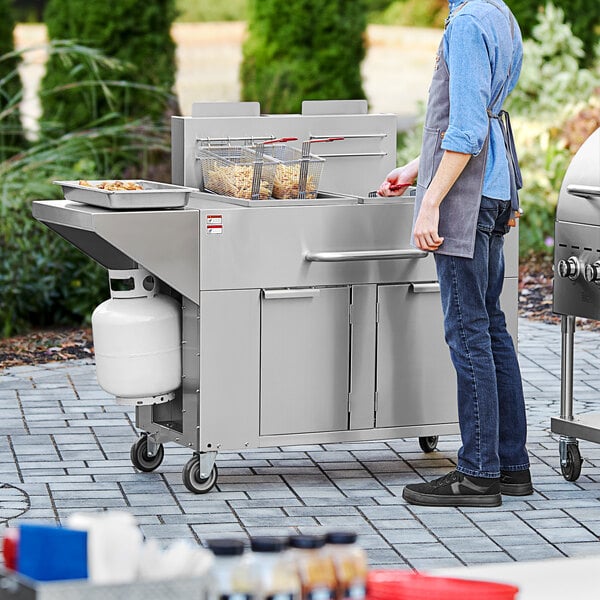
6. Outdoor Fryers
Outdoor fryers are great for any commercial operation that requires cooking equipment for outdoor events. These fryers are designed with a portable design that makes them perfect for outdoor catering applications, barbecue competitions, and state fairs. When determining your production requirements, select an outdoor fryer that offers the specific features you need. Whether you opt for a multi-tank model or an outdoor fryer with additional side grills, there are versatile options available to expand your cooking capabilities.
Most outdoor fryers are liquid propane-powered, offering the convenience of not needing to be plugged into an electrical outlet. This feature allows for easy setup and operation in outdoor settings where electricity may not be readily available.

7. Drop-In Fryer
Drop-in fryers are a practical and efficient choice for commercial kitchens looking to combine functionality with space-saving design. These fryers are designed to fit inside a cutout in your countertop, allowing for a seamless integration that conserves valuable space in your kitchen layout. The height of the fryer is consistent with that of your countertop, creating a visually appealing design ideal for front-end facing and open kitchens.
The fry pot in a drop-in fryer is removable, making it convenient to clean and maintain. Many have added safety features and will automatically shut off if they overheat.
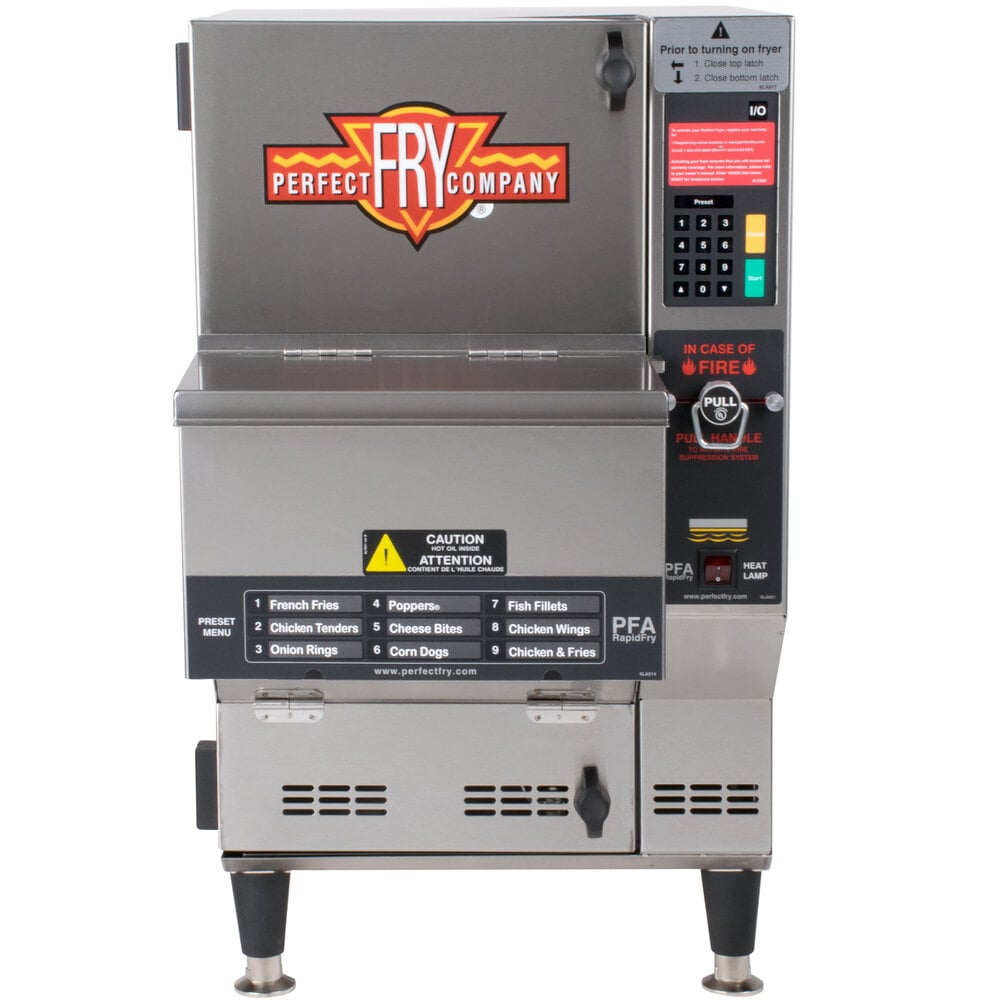
8. Ventless Fryer
The innovative ventless fryer features a built-in filtration and fire suppression system that eliminates the need for hood ventilation. This means you can place a ventless fryer anywhere in your kitchen for greater flexibility. Easy to clean and operate, they are virtually odorless and even feature a self-contained oil drainage kit that allows operators to empty oil even when it's hot.
Ventless fryers are ideal for kitchens that may not have the space or capability for proper ventilation, such as historic buildings or stadiums. They are one of the most expensive fryer options and come in semi- or fully-automatic electric models.
Choosing between a countertop fryer and a floor-model fryer will depend on the size of your kitchen and how much product you will fry daily. Both types are available in gas and electric models, offering versatility to suit your kitchen setup.
Countertop Fryers
Countertop fryers are designed to be compact and space-saving, making them ideal for establishments with limited kitchen space. These fryers are perfect for smaller kitchens or food trucks where every inch of space matters. Despite their smaller size, countertop fryers are efficient and can still handle a moderate amount of frying. Electric countertop fryers are easy to install and can be easily moved for cleaning or reorganizing the kitchen layout.
- Space-saving, portable design is great for small-footprint kitchen
- Easy to use and maintain
- Ideal for small restaurants, food trucks, and concession stands
- Ventless countertop models available that possess top-tier filtration for increased convenience and safety
- May have difficulty keeping up with high-volume demand
Floor Fryers
Floor fryers are larger and are designed to accommodate larger batches of food. These fryers are better suited for establishments with a fry-heavy menu or high-volume frying needs. Floor fryers are typically more powerful and have a higher capacity compared to countertop fryers, making them a great choice for busy commercial kitchens.
- Best for high-volume restaurants that sell large quantities of fried food
- Able to handle constant use throughout the day
- Typically has a quicker recovery time in between batches than countertop fryers
- Most will need hood ventilation
- May be difficult to accommodate in small-footprint kitchens
It is also important to consider the frequency you will be using your fryer to determine if you need a lighter or heavier duty unit, the layout of your kitchen to determine where you will be placing the fryer, and the fryer size you will need.
Durability
Manufacturers create their assorted fryers with various usage rates in mind, so you'll need to be mindful of how a specific fryer is rated.
- Light-duty fryers: These units are best for low-volume use at a deli, concession stand, or another small business that has frying as a niche. They're not constructed with constant use in mind.
- Medium-duty fryers: While they're designed to handle similar applications to light-duty models, they can handle notably more frequent use without losing performance efficiency.
- Heavy-duty fryers: If you have a popular restaurant or food truck that focuses on fried foods, you'll likely be in the market for a heavy-duty model. It focuses on durability, from the body to the legs to the fry baskets.
Location
A fryer's location is critical to the life and quality of its oil. Oil must be as clean as possible to avoid flavor tampering and create a high-quality product. Top-notch filtration should be a priority, but placement away from other equipment that tends to spatter, like ranges, will also help.
Fryers cannot be located by open burners, griddles, or broilers unless you use a spreader that's at least 12" tall in between to protect from spattering and other potential messes. Many locations often forget about them, but you can purchase deep fryer covers to place over your vats when they're not in use.
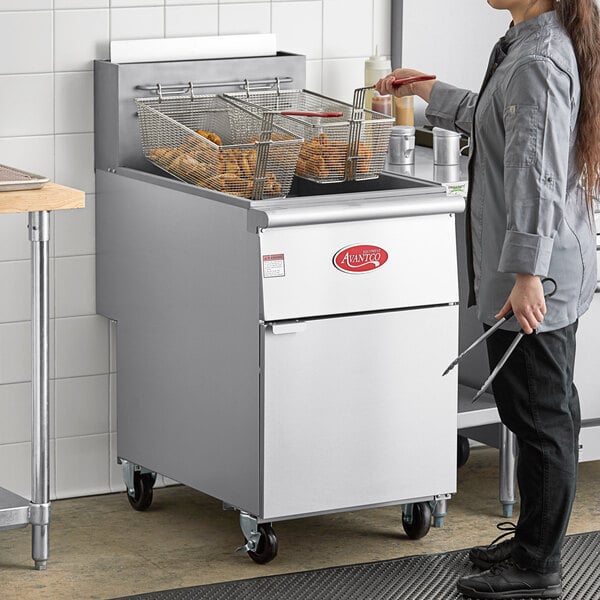
Size
You'll always need to consider your volume requirements when selecting a fryer size, in addition to the amount of space you have available in your kitchen. Countertop and floor models will vary widely, from compact units to massive batteries.
The most common widths range between 11" and 34", but you can find models that go up to 94". Manufacturers typically measure tank capacities in pounds or maximum oil volume. Capacities can range up to almost 500 lb.
You can take multiple units and set them up side by side to create batteries of your own, which gives you more precise control over your production rates. Consider the number of customers you see daily as well as the diversity of your menu. You can get split-tank fryers that fit in one footprint but accommodate multiple items - usually two.
Advanced Controls and Features
By choosing a commercial deep fryer with advanced features, you can enhance efficiency, productivity, and safety in your kitchen operations. Consider the specific needs of your establishment and select a fryer that offers the right combination of features to meet your requirements.
- Programmable controls: With advanced operating systems, some fryers can send notifications when the preset cooking time expires, which ensures that you're always aware of what's going on.
- Oil filtration system: You'll save money and cut down on time spent cleaning with a filtration system that maintains oil quality for longer periods, thus extending the oil's service life. Cleaner oil means better tasting and better-looking food.
- Energy-efficient models: Some energy-efficient models have a blower system powered by an economical electric motor, which pushes or pulls heat from combustion through the unit. It doesn't have to rely solely on gas pressure to heat the tank. Others have premix burners that mix precise combos of gas and air to achieve excellent efficiency rates.
- Safety features: Advanced fryers are equipped with safety features such as automatic shut-off systems, overheat protection, and cool-touch handles to prevent accidents and ensure a safe working environment for kitchen staff.
When selecting a commercial deep fryer for your business, you must consider your specific needs and requirements. Whether you're looking for a countertop fryer for smaller batches or a floor fryer for high-volume frying, there are various options available to suit your business. Additionally, factors such as fryer capacity, power source, and fryer material should be taken into account to ensure you select the best fryer for your kitchen. If you're still having trouble deciding which restaurant range to purchase, check out our commercial fryer reviews to compare the best options out there!
Related Resources
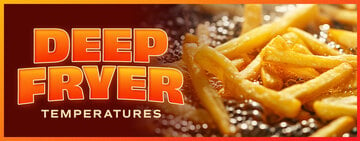
Deep Fryer Temperatures
To achieve the best possible results when deep frying, it is crucial to understand the significance of oil temperatures. Deep frying at the ideal temperature cooks food thoroughly and results in a crispy, golden exterior. Whether you are starting a concession stand or seeking training resources for your line cooks , our comprehensive guide covers the optimal frying temperatures for various fried foods. Average Temperature Range for Deep Frying When it comes to deep frying, maintaining the correct temperature throughout the cooking process is critical for achieving the perfect texture and taste. The average temperature range for deep frying typically falls between 350 and 375 degrees Fahrenheit. If you deep fry foods at too low a temperature

How to Fry the Perfect French Fries
The secret to achieving the perfect french fries is to fry them twice. Eliminating a majority of your potatoes' moisture before the final frying is key to yielding a crispy, golden brown product. To help you improve your restaurant's fries, we share the best potatoes for frying, how to choose the best oil , potato preparation tips, and how to season your french fries for the best flavor. Shop All Fryer Oil and Cooking Oil The Best Potatoes for French Fries The following varieties are some of the best types of potatoes for making french fries: Russet Katahdin Norkotah Kennebec Choose a Starchy Potato with Low Moisture The best frying potatoes have a high starch content and low moisture content. Starchy, low-moisture potatoes will yield the c
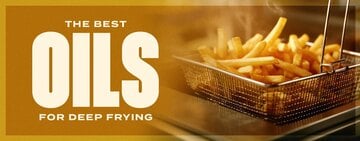
Choosing the Best Oil for Your Commercial Deep Fryer
When it comes to deep frying, choosing the right oil is crucial for kitchen safety and for creating delicious fried foods. Different cooking oils have a range of smoke points and flavors, making it important to consider these factors when selecting the best oil. Also, keep in mind that a commercial deep fryer holds several gallons of oil. Delicate oils that are expensive and break down quickly with heat will not be efficient or cost-effective for deep frying. Keep reading to learn more about the best oils for your deep fryer. Shop Cooking Oil Click below to learn about the best oils for commercial deep frying: How to Choose the Best Oil Recommended Oils Cooking Oils to Avoid Deep Fryer Oil FAQ What Is the Best Oil for Deep Frying? Vegetable
- Topics 1344
- Industrial 55
- Troubleshooting Guides 21
- Restaurant Management 128
- Bar Management 55
- Catering Tips 35
- Bakery Management 41
- Food Trucks & Concessions 49
- Advertising & Marketing 37
- Eco-Friendly Tips 11
- Facility Layout & Design 41
- Coffee Shop Tips 27
- Installation & Maintenance 51
- Janitorial & Pest Control 30
- Safety & Sanitation 88
- Startup Tips 104
- Menu Design 10
- Kitchen & Cooking Tips 81
- Hospitality Management 23
- Pizza & Sandwich Shop Tips 36
- Smallwares 37
- Food Prep 88
- Tabletop Items 17
- Disposables 22
- Calculators & Tools 6
- Consumables 52
- Warewashing & Laundry 18
- Cooking Equipment 90
- Food Storage & Refrigeration 51
- Beverage Equipment 34
- Office Supplies 6
- Resource Type
- In-Depth Articles272
- Buying Guides296
- How-Tos93
- Product Reviews77


